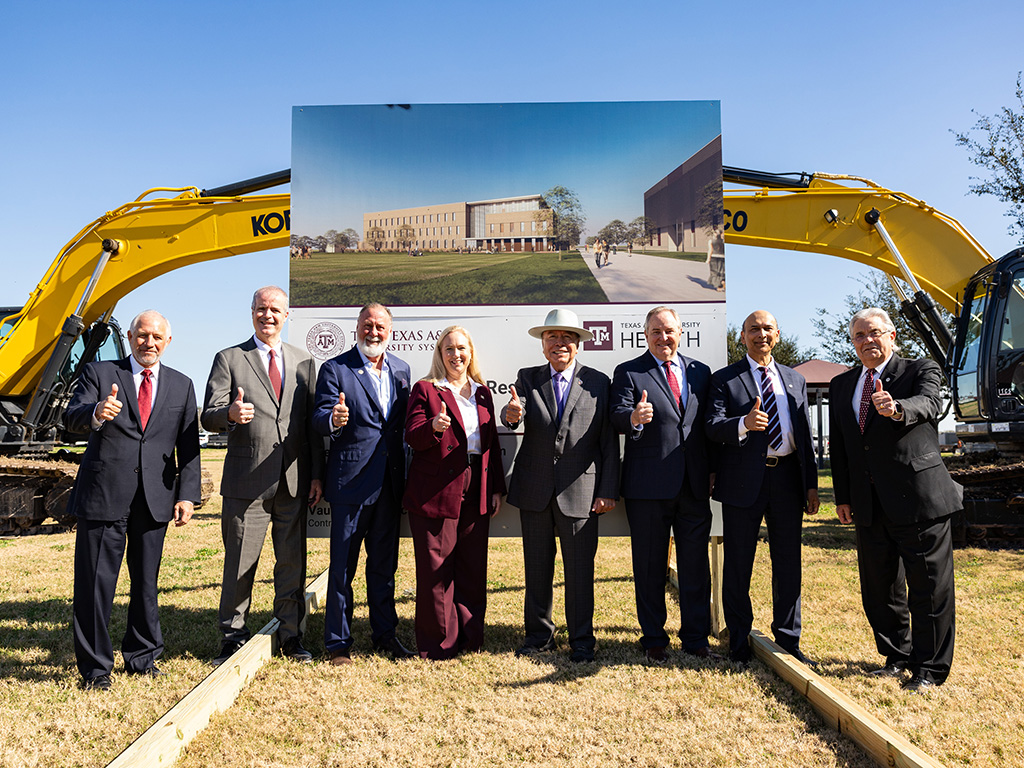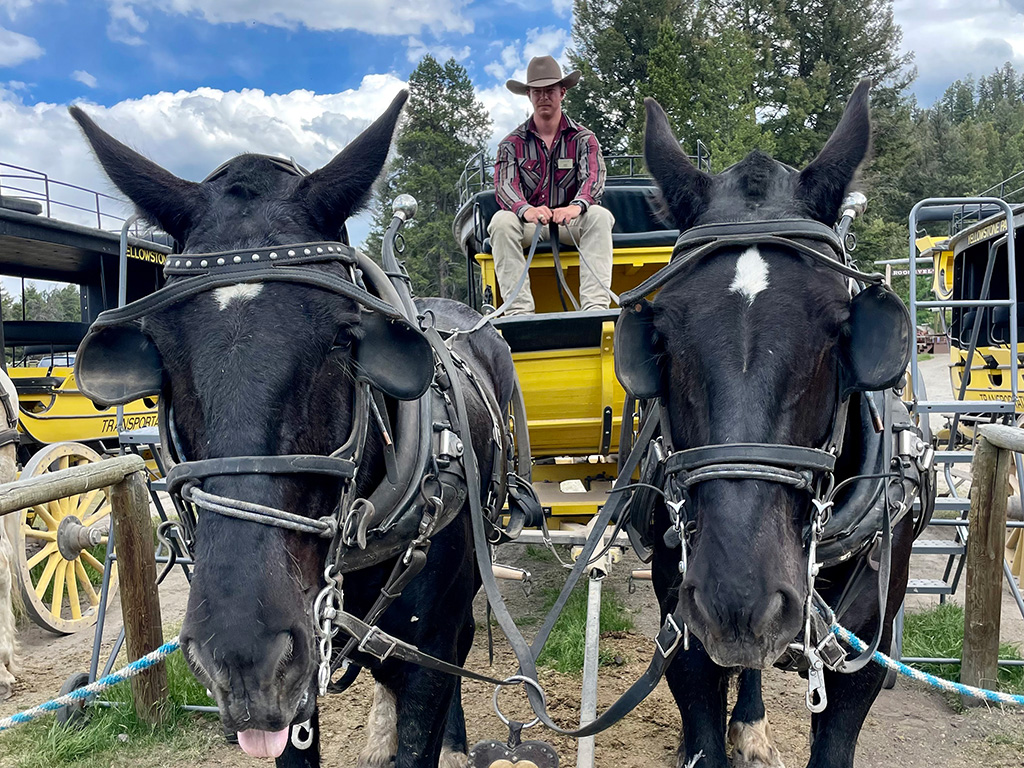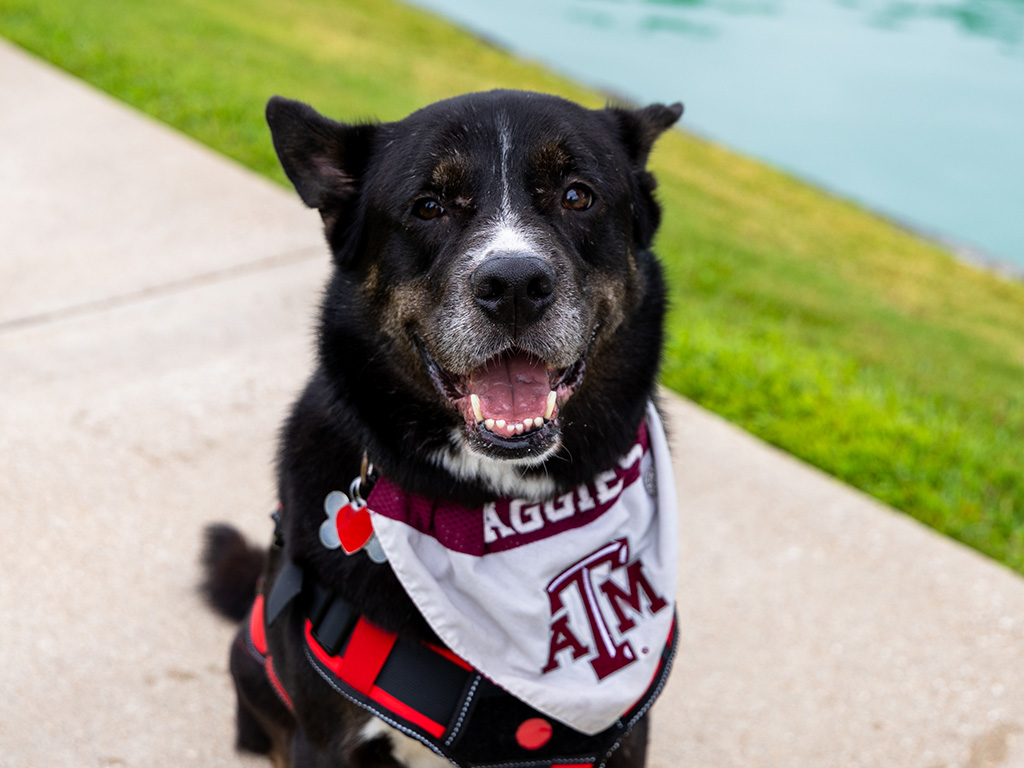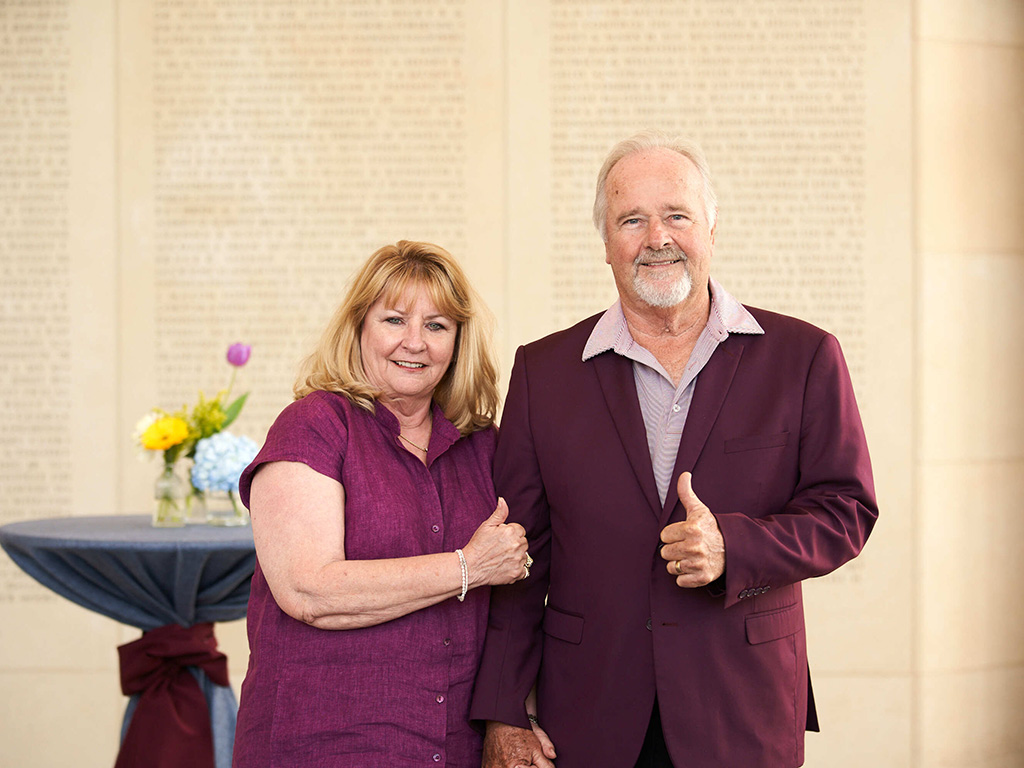Texas A&M Equine Theriogenology Service Extends A Beloved Donkey’s Legacy
Story by Rachel Knight, VMBS Marketing & Communications
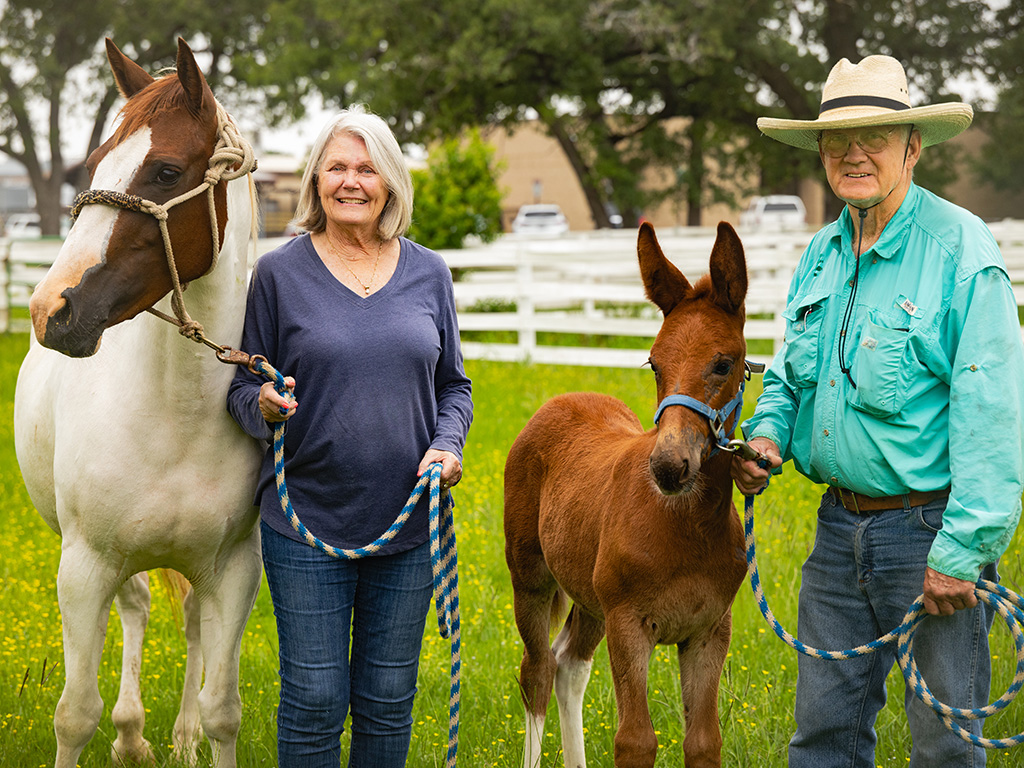
As any animal lover will tell you, there’s nothing quite like the human-animal bond.
For Martha and Tommy Soyars, their special connection was with Moses, a mammoth jack donkey who joined their family in 2007 as a young colt.
When the couple learned that Moses was approaching the end of his life, they began to consider the possibility of extending his legacy. With help from the Texas A&M Equine Theriogenology Service, the Soyars now have foals born from Moses’ lineage to ensure they stay connected to their dear donkey for many years to come.
The Origins Of A Special Bond
Tommy has had a love for mules — and Texas A&M University — since childhood, thanks to his father, Bill Soyars, who was a member of “The Kiddie Corps” (a nickname for the Texas A&M football team) and a rancher.
“I grew up hearing Dad’s stories about the Texas A&M team of underclassmen who stepped up to play varsity football after the upperclassmen were all called to serve in World War II,” Tommy said. “My dad taught me a lot of things, including to use mules instead of horses. We rode mules in our ranching operations for work as well as on our hunting and packing trips for pleasure.”
Tommy’s preference helped influence Martha’s as well; when Martha first joined the Soyars family, she was partial to horses but quickly came around to liking mules.

“I married into the mules. All I’d ridden before that were horses,” she explained. “I would have bet my life that horses are better than mules when I first met Tommy, but now I’d bet just the opposite. They’re smart, calm, surefooted, and so smooth. Riding them through the mountains on our packing trips, I never feel unsure or scared. They know what they’re doing and how to react calmly to stressful situations. They’re just incredible.”
In the early 90s, the Soyars started breeding and raising mules on their ranch. Moses joined the ranch in 2007 to serve as their stud, chosen specifically because of his height, a trait that comes from having American Mammoth Jackstock donkey in his lineage.
Mules with ties to this breed have been an integral part of American agriculture since famous individuals like George Washington and Henry Clay worked to develop the famously tall animals.
“People think jacks are mean, but Moses proved that they really can be very modest, shy, and gentle,” Tommy said.
“He was part of our family,” Martha added. “Moses was a very loving jack who had good, gentle babies.”
Looking To The Future
As he aged, Moses sustained an injury to one of his hind legs that was incurable and ultimately led to his death in 2023. The Soyars knew before Moses died that they wanted to continue raising his foals, so they contacted the Texas A&M Large Animal Teaching Hospital (LATH).
Drs. Juan Samper and Camilo Hernández — both equine theriogenologists at Texas A&M — talked to the Soyars about continuing Moses’ legacy postmortem.
“It’s unfortunate that our animals eventually die, but we can still work quickly to preserve their genetics and give families hope that their animal’s legacy can live on,” Hernández shared. “Our main concern for Moses was that animals that sustain an injury or experience a long-term illness sometimes produce lower quality sperm. So, I prepared the Soyars to not have their hopes too high before we started the process of collecting his semen posthumously.”
To everyone’s surprise, Hernández was able to collect enough of Moses’ semen to make about 65 breeding doses.
“I knew how much Moses meant to Mr. and Mrs. Soyars, so I called them right away,” Hernández shared. “They were so happy that I think they cried some happy tears. I know that they loved Moses, so it was really meaningful to help them extend his legacy.”
Foals On Board
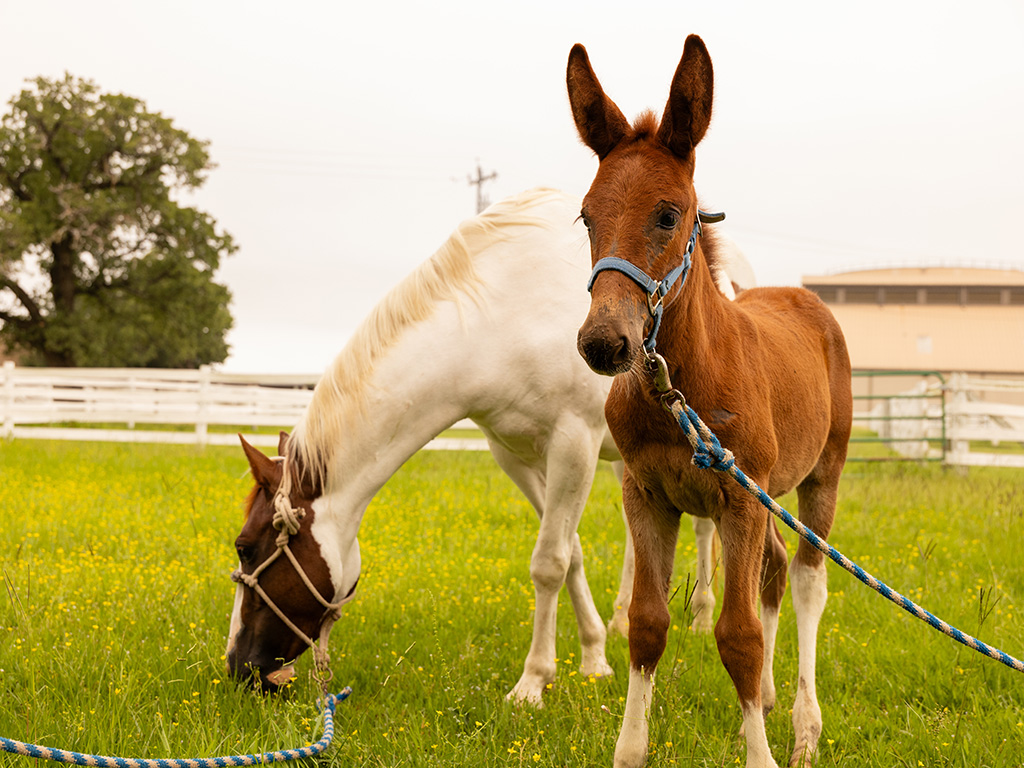
With Moses’ legacy secured by the Texas A&M Equine Theriogenology Service, the Soyars began searching for mares to breed.
“Our close friends, Mike Martin and Connie Doster Martin, really helped us out,” Martha said. “They had a couple of American Paint Horse mares named Lily and Clementine that we were able to bring home. They’re incredibly loving and gentle, and we couldn’t have picked better mammas for Moses’ babies.”
Lily and Clementine were brought to Texas A&M for artificial insemination, which Hernández oversaw.
“Breeding mares with sperm like what we collected from Moses is no different than breeding mares with what we call conventionally ejaculated sperm,” Hernández said. “The important thing is that when you breed these mares, you have to inseminate them as soon as you detect that the ovulation happens.”
Lily and Clementine were both successfully bred on the first try, and while Lily’s pregnancy was unfortunately lost in the first 90 days, Clementine experienced a full, healthy pregnancy while the Soyars anxiously awaited the arrival of their new foal.
“We were so excited when we found out we were going to be parents again, because that means Moses lives on,” Martha said. “I never had biological children of my own, so raising Moses’ babies and following Clementine’s pregnancy has been even more meaningful to me.”
In April, Clementine gave birth to a male foal that the Soyars named Isaiah.
“Isaiah is a symbol of salvation,” Martha said. “We’re continuing Moses’ legacy and his lineage, and Isaiah represents the salvation for many more foals born with Moses’ genes for several generations to come. We couldn’t be more excited.”
The LATH team bred Clementine again in May 2024 to further extend Moses’ lineage for the Soyars. Clementine is expected to give birth again in April or May 2025.
“At the end of the day, we do what we do to help animals but also to help people,” Hernández said. “We know how valuable Moses was to Mrs. and Mr. Soyars. We know that they loved this donkey and they wanted to be able to continue his legacy. It feels good when you are able to help families like the Soyars achieve these outcomes. Watching them with Isaiah is really rewarding and a good reminder of why we do what we do.”
Isaiah visited the LATH with Clementine, Martha, and Tommy on May 13, allowing Hernández, Samper, and the rest of the equine theriogenology team to meet the playful mule.
“He’s sweet and kind, just like his daddy,” Martha shared. “We couldn’t be happier. We’re looking forward to working with Dr. Samper and Dr. Hernández to breed Clementine and Lily again to continue Moses’ lineage further.”
###
Note: This story originally appeared in the Fall 2024 issue of VMBS Today.
For more information about the Texas A&M College of Veterinary Medicine & Biomedical Sciences, please visit our website at vetmed.tamu.edu or join us on Facebook, Instagram, and Twitter.
Contact Information: Jennifer Gauntt, Director of VMBS Communications, Texas A&M College of Veterinary Medicine & Biomedical Sciences, jgauntt@cvm.tamu.edu, 979-862-4216
You May Also Like

